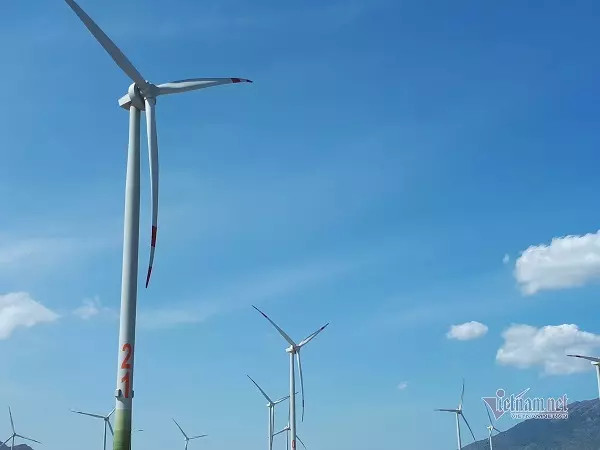
It is expected that by 2030, the total capacity of power plants will reach 145,930 MW, not including solar power and cogeneration sources.
The PDP VIII plan is designed on the assumption that demand for electricity will be high, with a 15 percent standby if the development of large resources is only equal to 85 percent of planned electricity sources.
The biggest change lies in the proportion of gas-fired thermal power in Vietnam’s electricity generation system, and wind power, both onshore and offshore.
The installation capacity of gas-fired thermal power (both domestic gas and LNG) accounts for more than 26 percent, slightly higher than coal-fired power capacity, by 2030.
According to MOIT, 12,000 MW of onshore wind power needs to be put into operation by 2030, including 2,800 MW in the north in 2024-2025 to ensure electricity supply.
At present, PDP VIII has not been approved, so there is still no legal foundation for implementation.
Regarding offshore wind power, it is expected that Vietnam will have 7,000 MW by 2030, including 3,000 MW in the south and 4,000 MW in the north. MOIT stressed that offshore wind power in the north needs to be put into operation in 2027 to ensure adequate supply for the north.
Some experts have expressed doubts about the feasibility of offshore wind power development.
Offshore wind power is a new field and has no legal foundation, pricing policy and associated mechanisms. It would be difficult to obtain installation capacity of 7,000 MW by 2030, though domestic and foreign investors have shown high interest in the field.
As such, the total installation capacity of renewable energy sources in the PDP VIII draft is over 21 percent. From now to 2030, wind power would have a great opportunity to develop and increase installation capacity, contrary to solar power.
MOIT does not want to develop more large-scale solar power projects, but to only focus on those projects already approved, from now to 2030 with total capacity of 2,428 MW.
Explaining this, MOIT said if electricity sources are put into use prior to 2030, this would lead to a sharp increase in the renewable energy proportion of the electricity generation system (26 percent of total capacity), thus affecting the safe operation of the system and the economic operation of existing hydraulic and thermal power plants.
Vietnam has to cut 18,000 MW of coal-fired thermopower capacity by 2030 to implement its commitments at COP 26 and replace it with LNG power and renewable energy sources (12-15,000 MW).
Luong Bang